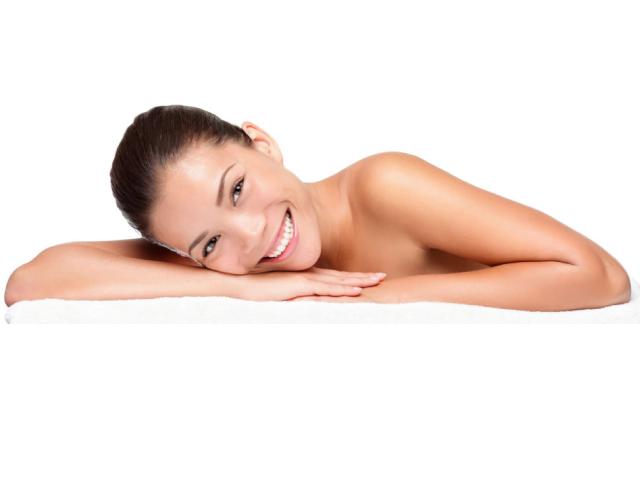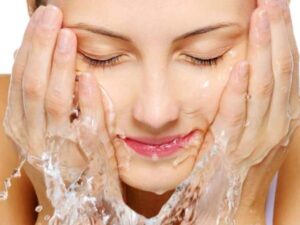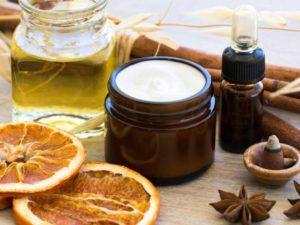In this month’s fashion related blog, learn about the latest and greatest in skin care related trends, fashions and fads.. What makes sense and what does not..
(1) “The 5:2 Skin Diet” – This translates into going makeup free for 2 days in a week. This trend is becoming increasingly popular in Europe. The idea is to help your skin to detox. And try to find its right moisture and sebum levels without being regulated by cosmetics. By dermatologists feel this does not really have any special benefit for your skin. Be sure to go easy on the make up. Take off your make up, carefully and thoroughly, before you go to bed. Cleanse twice- use a cleansing milk the first time, to remove make up. And a face wash the second time, to clean out your pores. This simple step is a lot more beneficial than the 5:2 skin diet.
(2) Face Masks – It comes down to clay-based masks and panda-faced serum soaked face sheets. The choices are truly mind-boggling with ingredients such as Vitamin C, Arbutin, Collagen, Charcoal, Ginseng, Pomegranate seed, Green tea, Acai Berry, Tannins, Avocado and Hyaluronic Acid to name a few. New innovations include water rubber masks, overnight peeling masks, layering double masks and foil masks to name a few. The L’Oreal Paris Clay Masks are promising too. The benefits include hydration, cleansing, skin softening, brightening, revitalization or mattifying – based on your choice of face mask. Masks are safe, quick and easy to use; and give an instant boost to your skin when you are strapped for time. Face Masks are becoming increasingly popular among patients and Dermatologists alike.
(3) ‘Biofilm’ fighting creams – Biofilm is the formation of extracellular matrix by skin bacteria, which renders the bacteria resistant to antibiotic assault. This has lead to antibiotic resistance in the treatment of acne. To fight this menace, researchers have now come up with creams containing anti-microbial enzymes aimed at the disruption of biofilm formation, and prevention of reformation. This can enhance the effect of antibacterial drugs, both in oral and topical form. Garlic, Flavenoids, Resveratrol (in red wine), Cranberry juice, Chlorogenic acids (from coffee and cinnamon), Frankincense, Sage and Wheat Bran extract, are natural anti-biofilm agents. This trend receives the Dermatologist’s stamp of approval.
(4) Probiotic Skin Care – Our skin hosts a rich variety of resident bacteria and fungi, which fight against external bacteria and protect our skin from infection and contamination. Excessive cleansing can destroy the “friendly bacteria” on our skin as well. This is a real concern, especially with widespread use of cleansers and soaps which contain antiseptics like Triclosan. On the other hand, when the skin barrier itself is compromised, these resident bacteria can turn problematic, as seen in acne. The pH balance of our skin, along with sebum (oil) content, sweat content, moisture levels and a sturdy skin barrier (free from diseases like Eczema), are necessary to maintain healthy population levels of these friendly bacteria.
Probiotic skin care contains live bacterial cultures, which when applied topically, influence the composition of bacterial flora on the skin. They produce lactic acid on fermentation, which maintains the acid mantle of the skin and destroys foreign pathogens. Probiotics also produce potent antimicrobial agents and lysates which protect the skin. Therefore, probiotic containing cosmetics are particularly helpful for people suffering from acne, dry skin and/or sensitive skin. These skin benefits have been researched and confirmed through small-scale clinical studies.
(5) Cosmetics containing Stem Cells and Growth Factors –
There is a whole variety of cosmeceutical and pharmaceutical skin and hair care products which contain stem cells. These are touted as ‘The’ magical fix for every concern ranging from hair fall to wrinkles. Stem cells are not to be confused with ‘Growth Factors’, though most pharma reps and beauty shop sales girls will use the two terms interchangeably. Stem cells have a lot of exciting applications in the field of medicine, and have the potential to change the way we approach disease management. Any layperson knows this. Which is why we get super excited at the idea of using stem cells in our beauty creams.
Stem cells do NOT work in cosmetic/anti-ageing creams and treatments. The stem cells used in cosmetics are dead. Plant stem cells do not work on human beings, besides being too large to penetrate the skin. The FDA has not approved these treatments because there is no scientific evidence regarding the efficacy of these products. Use of human-derived stem cells in beauty creams does not exist, and probably never will, as this is a very controversial area. Stem cells cannot survive outside the lab, in a jar of beauty cream that sits on the shelf for many months. They simply do not work that way.
Growth factors, on the other hand, are generally derived from cultured human skin tissue called fibroblasts. These produce the components necessary to support skin structure and elasticity. Growth factors are sometimes derived from one’s own blood (used in the highly popular “Vampire Facial”) and sometimes from snails or plants. Growth factors can improve the appearance of fine lines and wrinkles, under eye puffiness and skin discoloration. It gives the skin an overall radiance and translucency. The results take 6-12 weeks to show. Serums containing a combination of growth factors and antioxidants show faster results.
(6) “Plumping” Ingredients in Cosmetics – Also touted as Home DIY Fillers. These are based on Hyaluronic acid, just like in-office fillers like Juvederm or Restylane. ‘Fillerina’ is a popular example. They have full face plumping gels, lip plumping gels as well as gels specially formulated for the skin around the eyes. The ingredients work by attracting and trapping water in your skin, leading to the plumping and filling effect. Most products promise results in 7-14 days. I am not particularly impressed with such products as most of them are just as expensive as a syringe of dermal filler, without the instantaneous, gratifying and guaranteed results.
(7) Fat Dissolving Injections – Double chins cannot be exercised away. Liposuction involves painful surgery, post surgical oozing and bruises, several days of healing and compression bandages; and some people are left behind with tell-tale puncture scars where the lipo needles were inserted into the neck. Kybella is the only FDA approved injectable drug to dissolve chin fat, using fine needles, in a virtually painless manner. It works best in people with medium amount of chin fat. In clinical trials, the results have lasted several years. The injections are administered once a month for 3-6 months, depending upon the amount of fat present under the chin. Kybella gets a big Thumbs Up from me!
(8) DNA based skin care – A lot of you might have figured out by now that ageing is, to a great extent, genetically determined. DNA based skin care takes customized skin care 20 steps ahead. The dermatologist will take a sample of DNA from the inside of your cheek using an earbud-like device. Then a specific part of your DNA, known as the SNP, is examined. 5 different SNPs are analysed – the one that is responsible for sun damage, the one responsible for damage from excessive sugar in the body, the one that controls collagen formation, antioxidant protection and finally, inflammation control factor. Some of you might be more prone to damage from sun exposure. Some may suffer from faster collagen degradation. The dermatologist will recommend skin care, antioxidants, growth factors and/or nutritional supplements based on your DNA report.
The technology is very new. And ageing is much more than just DNA. Poor lifestyle choices, chronic stress and illnesses, prolonged exposure to sunlight and drugs can also affect ageing of the skin. Customized skin care does not account for these variables. Even so, I am very excited and optimistic about this trend!
(9) Home based skin care devices – Home Microdermabrasion creams and kits are last season. The latest fad is hand-held low light laser devices for hair regrowth (in the form of laser combs or hats), and hand-help IPL devices (based on light, and not laser) for permanent hair removal. All evidences suggest that this is a fad which over-promises but will invariably under-deliver. Hand-held phototherapy devices used to treat skin conditions like Vitiligo, have lived up to its promise and it is a worthwhile investment. Hand-held Acne devices like “Zeno” or “TRIA skin clarifying system” use blue light, sonic vibration and heat to get rid of acne on short notice. The devices are fairly safe but they only work on mild acne.
(10) K-Beauty Boom – Korea is the new Mecca of skin care. Cosmetic products from South Korea made a big splash on the international market due to certain unique ingredients like pearl powder, snail secretions, bee venom, starfish extract, truffle serum and seaweed to name a few. Colourful, attractive package and aggressive marketing of the image of pristine, porcelain Korean skin, added to its appeal amongst the masses and the classes. Some of these ingredients are no doubt promising and effective. However, K-Beauty typically consists of 8-10 steps and just as many products applied to the face, which is more assault and less pampering for the skin.




